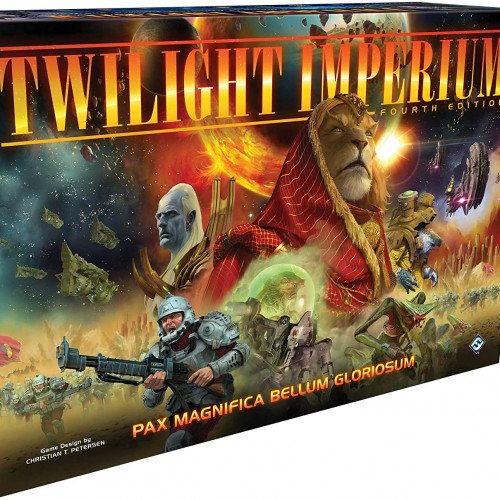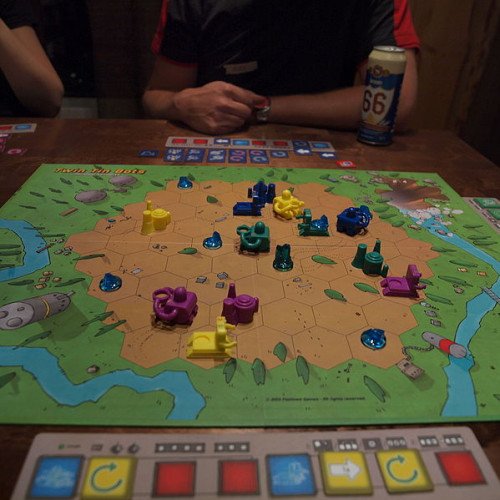"TWILIGHT IMPERIUM" vs "TWIN TIN BOTS"

TWILIGHT IMPERIUM
Twilight Imperium is a strategy board game produced by Fantasy Flight Games. It was designed by Christian T. Petersen and was first released in 1997. The game is in its fourth edition (2017), which has large changes over previous editions. It is known for the length of its gameplay (often greater than six hours), and its in-depth strategy (including military, political, technological and trade). The game's premise is a large-scale space opera. It is set in the unstable power vacuum left after the centuries-long decline and collapse of the previously dominant Lazax race. The old galactic central capital, Mecatol Rex, located in the center of the map is maintained by custodians who maintain the imperial libraries and oversee the meetings of the galactic council. Players assume the roles of rising empires on the fringes of the galaxy, vying for military and political control, until one finally becomes sufficiently dominant to take over as a new galactic emperor.
Statistics for this Xoptio

TWIN TIN BOTS
Twin Tin Bots is a 2014 board game designed by Philippe Keyaerts and published by Flatlined Games. Twin Tin Bots is a game for two to six players, about programming robots, in order to use them to gather and collect valuable crystals. The game is played on a hexagonal grid. Each player receives two robots and a command base. These are placed in specific positions on the grid. A number of crystals is also placed in specific positions on the grid. The crystals come in three colours: blue, green and pink. Blue crystals are worth 2 points, green crystals are worth 3 points and pink crystals are worth 4 points. The two robots given to each player have distinct appearances. This does not affect their functionality and only serves to tell the robots apart. The robots move by executing programs, which may be from one to three instructions in length. The instructions are simple tasks like "move forward", "turn left", "turn right", "pick up a crystal", "deposit a crystal" or "zap another robot". At the start of the game, each player places one instruction for both of their robots. Then the players execute their programs, one player at a time. Robots can pick up crystals from adjacent spaces, or even steal crystals from other robots if they are in adjacent spaces. Robots depositing crystals on command bases earns points for the base's owners. Upon successful deposit of a crystal, a new crystal is placed on the board. On each player's turn, the player can make one change to the program of one of their robots. The player can add another instruction, remove an instruction, replace an instruction with another, or swap the order of two instructions. Making more than one change is not allowed. Then the players execute their programs again. The game ends after a set number of crystals has come into play, or one player has reached a set number of points. The player with the most points wins.